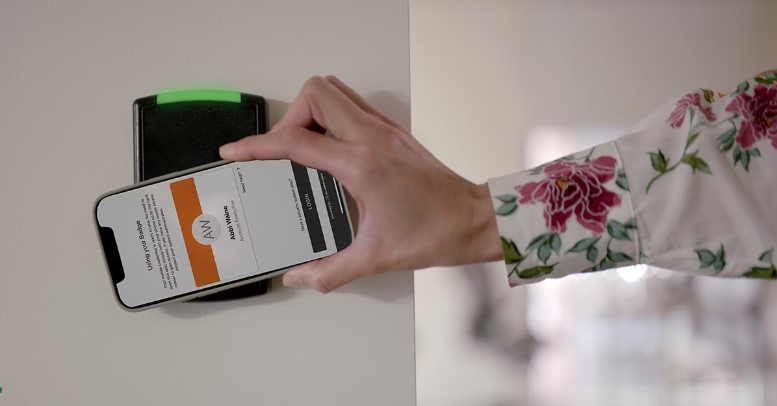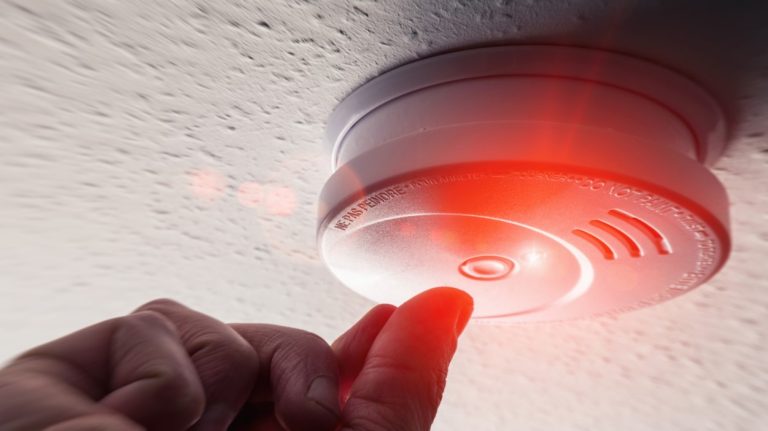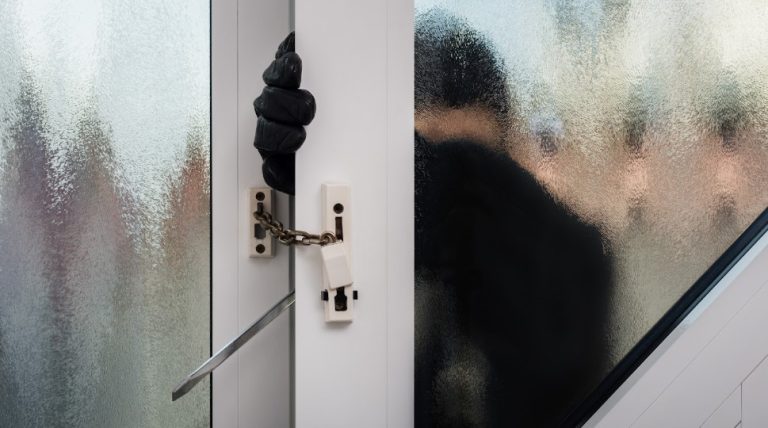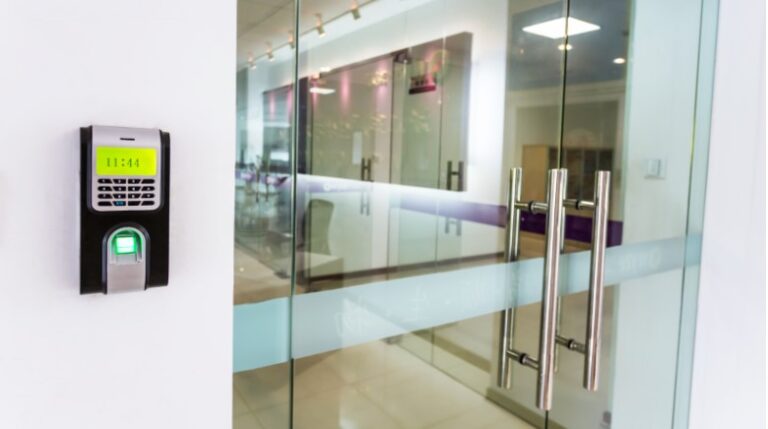5 Steps to Choosing the Right Access Control System
Finding an access control system that takes care of your business’ security and access is like finding a needle in a haystack: it takes time, patience, and maybe a bit of luck, but once you find it, everything just clicks. (Without the keys obviously)
Most business owners we talk to have these objections about alarm systems:
“There are so many options and it’s confusing”
“I have been using keys, I don’t need fancy systems”
“It sounds costly”
With so many options available, it can be overwhelming to choose the right one. Whether you’re dealing with outdated technology, multiple access points, or integration challenges, the right solution can significantly enhance your security and operational efficiency.
And here’s a kicker, it’s actually cheaper in the long run. We’ll explain that in a bit, so stick around until the end.
Here’s a simple, step-by-step guide to help you make the best choice. Rest assured, we’re here to support you every step of the way.
Step 1: Figure Out What You Need
Begin by evaluating your specific access control needs. Consider the size of your premises, the number of entry points, and the required level of security. Determine if you need a system for a single location or multiple sites, and whether you require integration with existing security measures like CCTV or alarm systems. Additionally, outline your budget to understand what you can afford initially and for ongoing maintenance. This initial assessment is crucial for identifying the type of system that will best suit your unique situation.
Budget Considerations: Determining your budget is a crucial part of assessing your access control needs. For small offices, basic systems can range from $229 to $549 for equipment, with monitoring costs starting at $9.99 per month (Quick Sprout). For more comprehensive systems, you can expect to spend between $1,000 and $3,000 for mid-range equipment, with installation adding another $500 to $2,000 (Vector Security) (Quick Sprout). Advanced systems for multiple locations can cost between $3,000 and $10,000, with ongoing monitoring and maintenance costs ranging from $50 to $100 per month (Quick Sprout). Custom solutions are available for businesses with specific needs and typically require a detailed quote from the provider (Vector Security).
For a detailed guide on assessing your requirements based on different scenarios, explore: Assessing Your Access Control Needs: A Comprehensive Guide for Businesses
Step 2: Determine the Type of Access Control System
There are various types of access control systems, each with its own advantages. Common options include:
- Card-Based Systems: These systems use key cards or fobs, which are swiped or tapped to gain access. They are straightforward and easy to manage but can be vulnerable to loss or theft.
- Pros: Easy to manage, scalable for large numbers of users.
- Cons: Cards can be lost, stolen, or duplicated.
- Example: A medium-sized office with frequent visitors might benefit from card-based systems because they can easily issue temporary access cards.

- Biometric Systems: These systems use unique biological traits like fingerprints, facial recognition, or iris scans to grant access. They offer high security and are difficult to duplicate.
- Pros: High security, difficult to duplicate.
- Cons: Higher initial costs, potential privacy concerns.
- Example: A research facility handling sensitive information may use biometric systems to ensure only authorized personnel can access restricted areas.

- Keypad Systems: Users enter a PIN code to gain access. This method is simple and cost-effective but relies on users keeping their codes secure.
- Pros: Simple and cost-effective, no need for physical cards.
- Cons: Users must remember codes, risk of codes being shared.
- Example: A small business with a limited number of employees may find keypad systems sufficient for their security needs.

- Wireless Systems: These use Wi-Fi, Bluetooth, or other wireless technologies, often allowing access through smartphones or other devices. They offer flexibility and convenience but need robust cybersecurity measures.
- Pros: High flexibility, integrates well with modern devices.
- Cons: Requires strong cybersecurity measures to prevent hacking.
- Example: A tech startup with a dynamic office environment might prefer wireless systems for their ease of use and integration with other digital tools.

Selecting the right type depends on your specific needs, such as the level of security required, ease of use, and integration capabilities with your existing systems.
Step 3: Consider Scalability and Future Needs
It’s essential to choose a system that can grow with your business. If you anticipate expansion, select a system that can accommodate additional entry points and users without significant disruptions or costs. Scalability ensures that your access control system remains effective as your business evolves.
Consider Modular Systems: Look for systems that offer modular components, allowing you to add new features or expand capacity easily. This flexibility can save you from costly upgrades or replacements in the future. Ensure the system can integrate with new technologies and adapt to changing security requirements.
Example: If you are a small business planning to expand to multiple locations, a cloud-based access control system might be ideal. These systems can be managed remotely and scaled up easily to include new sites, additional entry points, and more users. For instance, companies like Kisi, Envoy, and Alarm Guard Security offer scalable solutions that can grow with your business needs.
Step 4: Evaluate Security Features
When selecting an access control system, it’s crucial to examine its security features. Look for systems that offer robust encryption, secure communication protocols, and comprehensive audit trails. These features ensure that your access control system can protect sensitive areas and provide detailed records of access events.
Example: Advanced biometric systems not only provide high security through unique biological identifiers but also offer encryption to protect the data collected. Similarly, systems with secure communication protocols can prevent unauthorized access and ensure that data transmitted between devices is secure. Companies like Honeywell, Johnson Controls, and Alarm Guard Security provide systems with such advanced security features.
Step 5: Assess Ease of Use and Support
The access control system you choose should be user-friendly for both administrators and end-users. A system with a straightforward interface, easy programming, and simple processes for adding or removing users will save time and reduce the likelihood of errors. Additionally, it’s crucial to choose a vendor that offers reliable customer support, maintenance services, and regular system updates to ensure your system remains effective and up-to-date.
Example: Systems from leading companies often provide robust security features along with excellent user interfaces and comprehensive customer support. These systems are designed to be intuitive, reducing the learning curve for administrators and end-users alike.
Does it cost too much?
Imagine you own a church and have given away multiple keys to various people. Over time, keys are lost, not returned, or fall into the hands of individuals you no longer wish to have access. To maintain security, you might need to change the locks frequently, which is both time-consuming and costly.
With an access control system, you can easily add or remove access without changing the locks. For example, if a staff member leaves, you can simply revoke their access permissions electronically. If new members join, you can grant them access without needing to distribute physical keys. This not only enhances security but also saves money in the long run by reducing the need for new locks and keys.
Cost-Effectiveness:
- Initial Investment: While the initial cost of installing an access control system might seem high, it can be more cost-effective over time.
- Reduced Maintenance: Fewer physical changes, such as rekeying locks, mean lower maintenance costs.
- Enhanced Security: Preventing unauthorized access and potential security breaches can save significant amounts in potential losses and damages.
Still Confused? Don’t Worry, Give Us a Call!
We know choosing the right access control system can be tricky. But don’t stress – with the right system, you’ll boost your security and streamline operations. At Alarm Guard Security, we’re here to help with solutions tailored just for you.
Take a deep breath, relax, and let us handle the hard part. Give us a call today at +1 866-282-3331 to see how we can make securing your business a breeze – and maybe even a bit fun.
Testimonials
“We’ve been using Alarm Guard’s access control system for over five years, and it has significantly improved our security. The system is easy to use and scalable, which was crucial for our expanding business.” – Jarred Coles, Arcane Consulting






